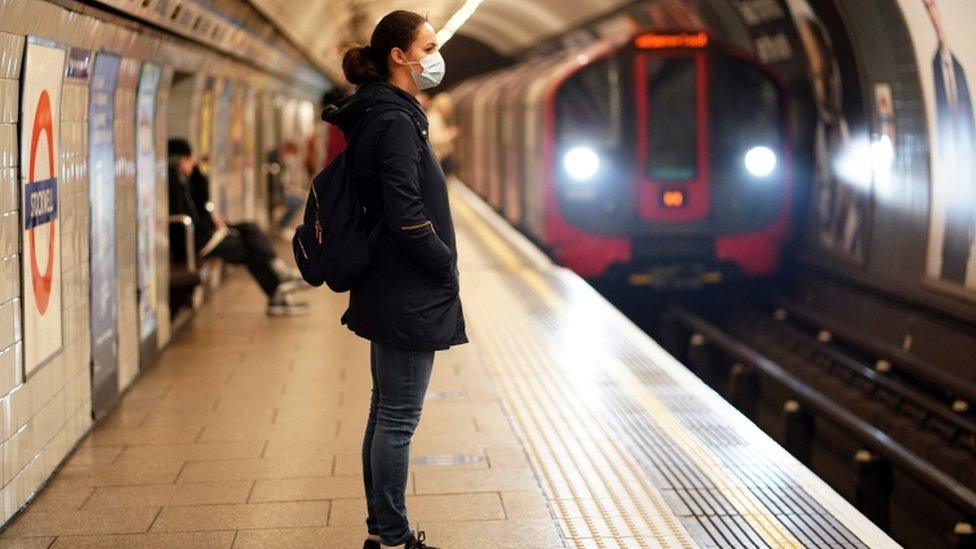Elizabeth line: How the 'perfect' project became a nightmare
- Published
- comments
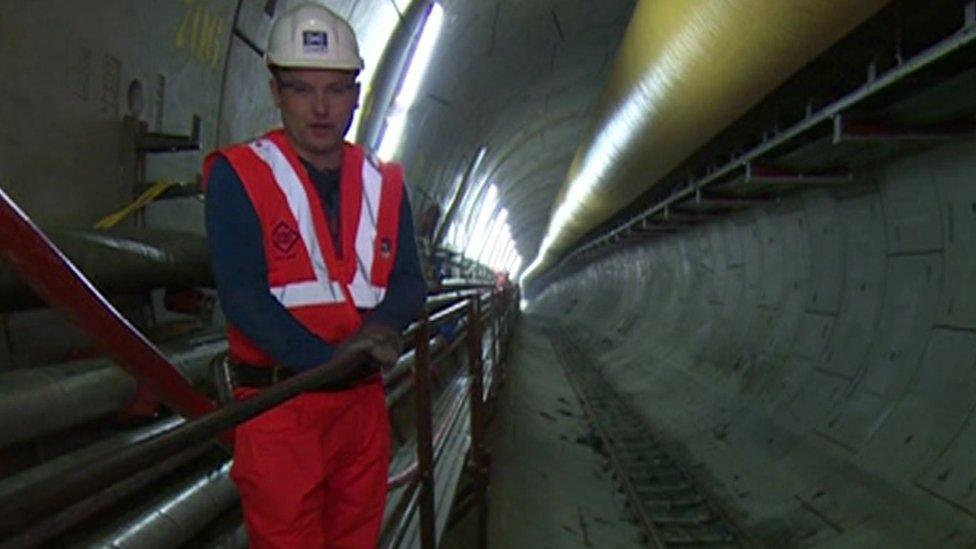
As part of my job as transport correspondent at BBC London, I've covered most of the construction of Crossrail. It has been a unique project with twists and turns and, unfortunately, some tragedies along the way.
In terms of budget, Crossrail cost more than the Olympics. It will also arguably change London more, too.
Ahead of the line opening on 24 May, I thought it was a good time to recount how covering Crossrail morphed from the perfect project, to a nightmare, to where we are now.
Shrine to Saint Barbara
What sticks in the memory from the early days were the visits down into the tunnels.
At the time they were extremely noisy, dirty places where miners worked round the clock in colossal tunnel-boring machines.
These machines were so big they had their own kitchen in them and their own toilets.
At the entrance to every tunnel was a shrine to Saint Barbara - the patron saint of miners.
The miners came from all over the world. It is a highly skilled job and many of them have now moved on to the High Speed 2 (HS2) rail project.
Those who worked on Crossrail have always been proud of it.
Walking through the new tunnel from Bond Street to Tottenham Court Road was a highlight for an infrastructure nerd like me
At the start you had to carry breathing apparatus down there in case there was a gas leak, although there was a definite optimism when you spoke to people.
As the tunnelling progressed you had to get a small train to the front of the tunnel.
Tragedies
There is no doubt the stations and the trains are impressive. They have been built so the service can grow in the future. The challenge now is for Transport for London (TfL) to run a decent service.
We can't forget the tragedies that have happened during this project.
There was a human cost that is often forgotten.
Renè Tkáčik was 43 when he was killed by a section of the tunnel roof collapsing. The Slovakian had been spraying the walls with liquid concrete.
Two other people were injured in similar incidents. One had his leg crushed by a tipper truck, the other was injured when a high-pressure mixture struck him.
The contractor was fined over £1m for health and safety breaches. It was one of many harrowing low points for the project.
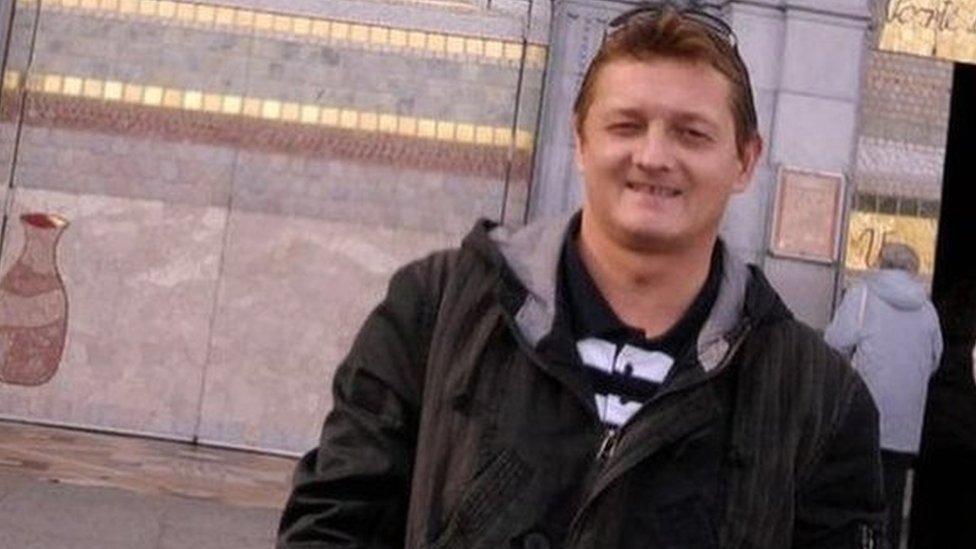
Rene Tkáčik died as nearly a tonne of wet concrete was poured on to him

Claire Hitier-Abadie, 36, was cycling to her new job when she was hit by a Crossrail truck, killing her instantly
While most Londoners, may not have noticed the construction below the surface, the Crossrail lorries became infamous above the ground.
Four people died in collisions with Crossrail trucks - three cyclists and one pedestrian.
That is too high a price.
At the time, Mayor of London Sadiq Khan asked TfL to look into creating a memorial to them once the line was open.
Mr Khan said: "The incidents which claimed the lives of Maria Karsa, Brian Holt, Ted Wood and Claire Hitier-Abadie were unacceptable tragedies.
"My thoughts are with their families and friends, and I know the same is true of the management of Crossrail Limited."
Many businesses, like the famous Astoria nightclub, were demolished to make way for the line.
Another business just around the corner from there - the Soho Gin Club - had a long fight for compensation after Crossrail smashed into its cellar, closing the business.
Fall from grace
In its earliest incarnation, I described the Crossrail project as the rock-star of infrastructure projects.
For a time it seemed bullet-proof.
It was the biggest infrastructure project in Europe with a mantra of "on time and on budget".
Back then, the management was so confident that they allowed cars to drive through the tunnels for an advert.
The scheme had its own BBC documentary.
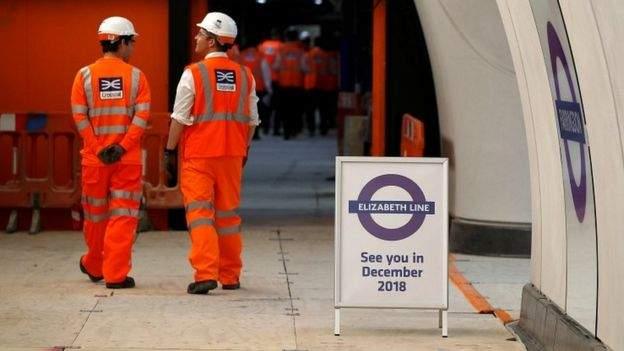
Whispers started about delays began to emerge in 2018
Weeks before the first rumours of delays started to emerge, management was adamant the project would finish in 2018.
The truth was somewhat different.
Locals contacted me about serious concerns about the renovations at stations in west London.
When I went down there, work hadn't even started. It was clearly not going to be ready by 2018.
Crossrail claimed it could run trains into the existing stations but soon things started to unravel.
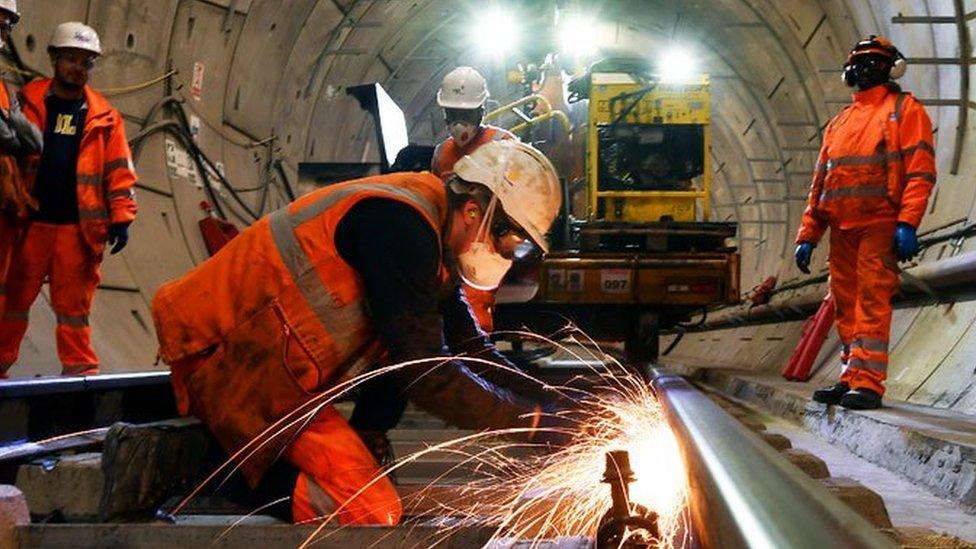
The tunnelling side of the project came in mostly on time
While the tunnelling had gone OK, the technical side of things was faltering. Three signalling systems didn't want to "talk" to the new trains.
Bond Street station slipped badly behind.
The project suffered a huge, undignified fall from grace and became a bit of a joke.
Some people thought it might never open. A few weeks ago I got a text from a colleague who said the same thing - mud sticks.

Crossrail is due to open at the end of May, unless anything else goes wrong
And so we entered into a long period of delay after delay being announced.
There was also an almighty political row as City Hall fell out with the then Crossrail management amid accusations of who knew what about the delays and when.
Part of the problem was Crossrail had two "sponsors" - the Department for Transport and TfL - and so there didn't seem to be a clear line of accountability.
A new management team was soon brought in.
Out of pocket
The delays also meant some businesses in places like Abbey Wood which had invested, expecting an increase in passengers, were left angry and out of pocket.
Some like Nim Bhadrare, who runs a minicab company in Abbey Wood, thought they'd lose their whole business.
Don't forget Crossrail was meant to cost £14.8bn - although that was actually the budget after a reduction.
Instead it cost £18.8bn. Most of the extra spending was picked up by London.
Crossrail was meant to open in December 2018 now it will open at the end of this month.
A journey on the new Elizabeth line
It is important to remember that 70% of Crossrail's budget came from the capital.
Funding came from TfL and the Greater London Authority. London's businesses also paid a Crossrail levy. Heathrow and Canary Wharf contributed too. The rest came from central government.
These things take time
An east-west railway across London was first mentioned in the 1800s. Crossrail arguably was first mentioned by name in 1974 in the London Rail Study.
The Crossrail Hybrid Bill, external was presented to Parliament in February 2005.
These things take a long time.
It is difficult to see a project of this scale being funded by the current government in the South East. The levelling up agenda means the focus is elsewhere.
Funding has stalled on Crossrail 2. The future of the north-east to the south-west underground route has been safeguarded but it could now be decades away.
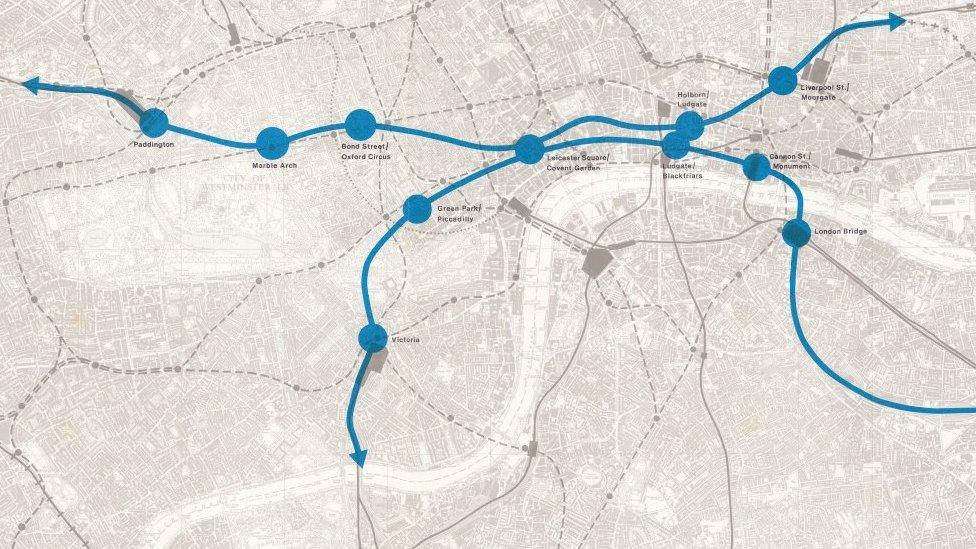
A "Crossrail scheme" was suggested in 1974 in the London Rail Study
The project has led to plenty of questions for the future: have the delays to Crossrail stopped further investment in London? Will funding be more along the model used by the Northern line Battersea extension where developers pay?
And any new big regional project - wherever it is in the country - will probably have to be built with reduced government funding. Except for HS2 - for the time being.
The pandemic - and of course working from home - has also left governments and transport authorities and companies all over the world with financial problems.
Although of course, TfL will now hope it will see revenues increase with the opening of the Elizabeth line.
It is almost surreal now seeing the platforms and grand stations with trains whizzing through every five minutes.
From dusty, muddy tunnels to the grand opening - it has been quite the journey.
- Published13 April 2022
- Published14 March 2022
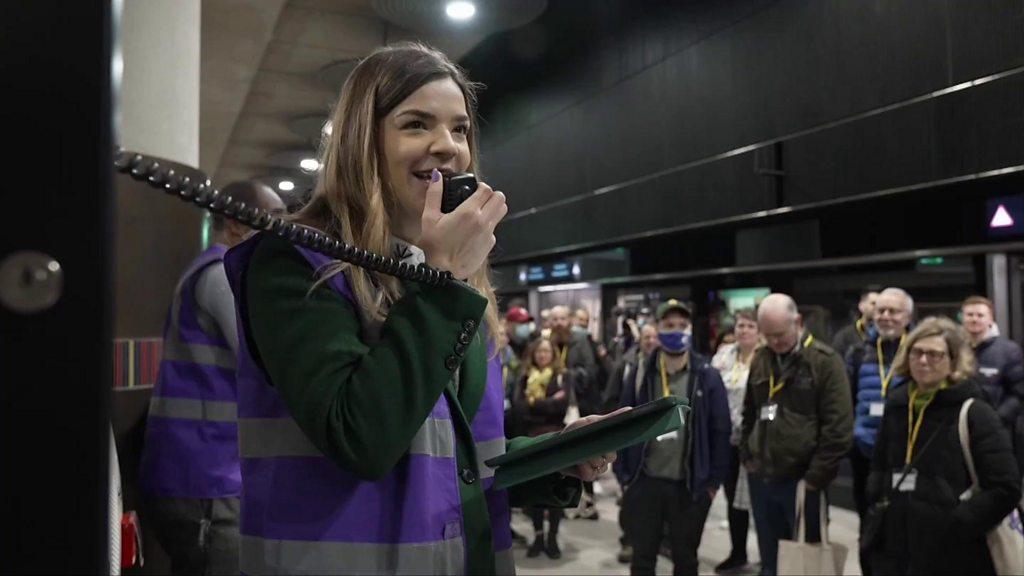
- Published14 March 2022
- Published27 October 2020
